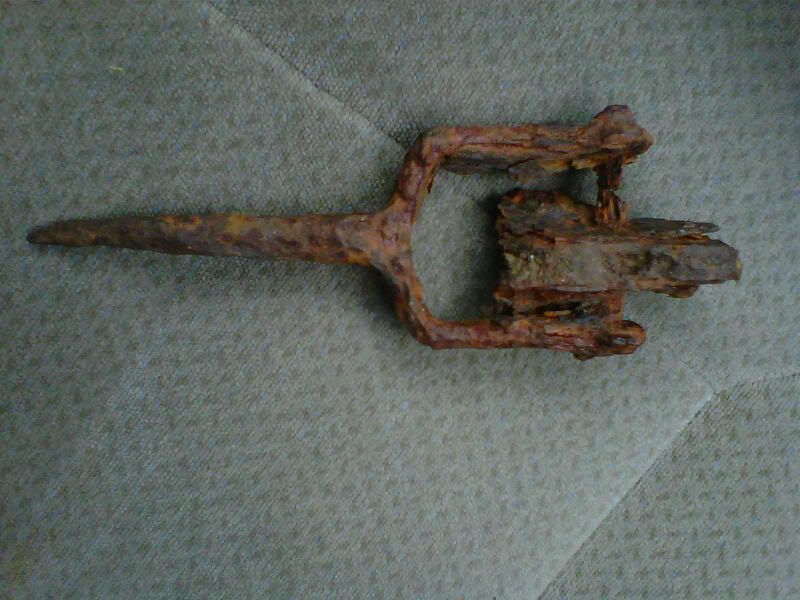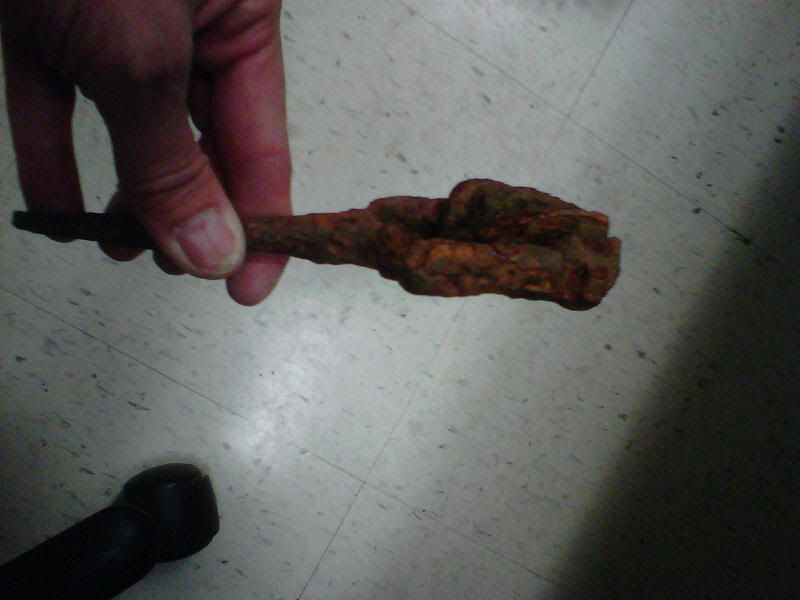When I visited Guilford NY, home to my Bradbury ancestors, the town historian gave me this iron artifact that was found on the site of the Guilford Iron Works. This iron foundry and machine shop was owned by my gr-gr-gr-great-grandfather Andrew Bradbury and my gr-gr-great-grandfather John Bradbury (died on the Jenny Lind) very likely worked there, as he is buried under an iron grave marker, when Andrew and the others all have marble, so it likely wasn't due to the expense of materials and seems to have been by choice. Humble though it may be, this rusty whatzit is all I own that belonged to this part of my family.
The foundry and machine shop produced industrial goods like wagon parts and water wheels. The man who was in partnership in the foundry with Andrew was an inventor with quite a few patents for industrial machines. The foundry was in business from 1844 until 1919.
Can anyone identify what this was? It is definitely iron and a magnet sticks to it. The over-all length is 7" and the over-all width is 2-1/2". The spiked end appears to have been made to go into a wooden handle, leaving the U shape exposed to rotate about the pin that goes through the whole assembly. The piece suspended from the pin was broken off and was once longer. I think I may have a broken piece of a winch or perhaps a wagon brake? That's about the best guess I can make so far, looking at old equipment from this time period.
This rusty ol' whatzit has had a hard life. It is a great example of how rust can eat away at an iron object. (We're gonna have to use this as an example of why we should clean rust from iron!) This part has been sitting in rain, sun and snow for a century or more. There is deep and very severe deterioration. My second question is now that this discarded broken whatzit has graduated to being a treasured family heirloom, what if anything should be done to halt the deterioration, or has it gone too far to even make an attempt? I do have a lye bath setup, but that is better for burned pans than rusted iron. White vinegar could be used, so long as I am careful and remove it immediately. Or should I just leave well enough alone on this one and just keep it dry? As you can see in the first photo, the deterioration has penetrated deep into the metal and is even splitting it into "layers" and basically eating whatever this was alive.



